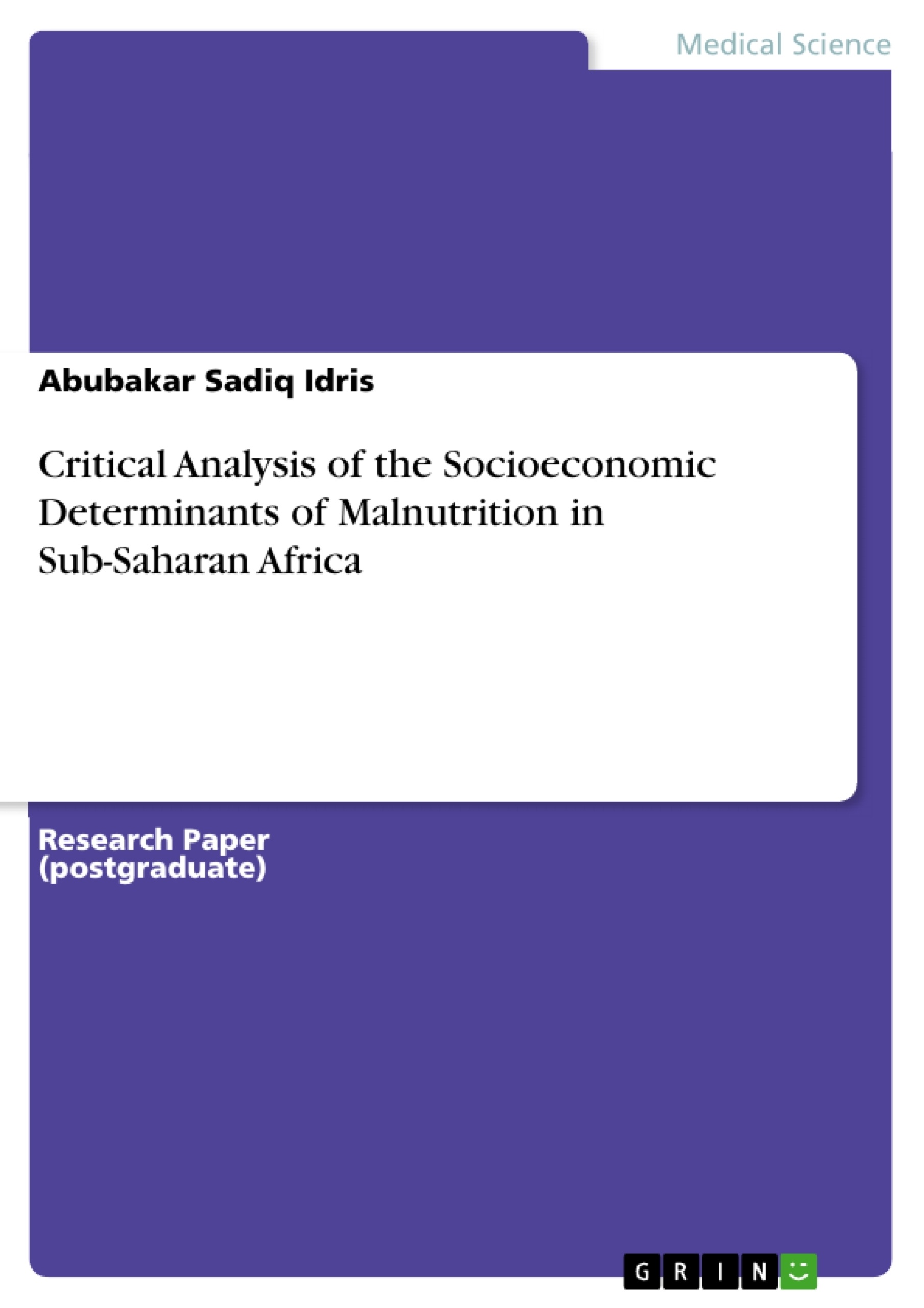Malnutrition is a serious challenge posing tremendous negative impact in sub-Saharan Africa and the world in general. In view of this, the United Nations (UN) proposed the Sustainable Development Goals (SDG2) which hopes to “End hunger, achieve food security and improved nutrition and ensure sustainable food production by 2030”. Several socio-economic factors have been identified as the principal causes of malnutrition; some of these include poverty, lack of education, poor government policies, poor access to healthcare, poor access to hygienic water supply and environmental sanitation, lack of toilet facilities as well as gender inequality and corruption. However, it is important to note that all of these factors are related to each other in one way or another. Thus, in order to mitigate the continued rise in the level of malnutrition in sub-Saharan Africa, a multifocal approach is needed. These factors should not be approached individually in the process of finding a viable solution to the scourge of malnutrition, rather they should be approached as a collective entity in the planning and implementation of government policies.
Inhaltsverzeichnis (Table of Contents)
- Introduction
- Poverty
- Education
- Government Policy and Political Will
- Conclusion
Zielsetzung und Themenschwerpunkte (Objectives and Key Themes)
This essay aims to critically analyze the socio-economic determinants of malnutrition in sub-Saharan Africa, specifically focusing on poverty, lack of education, government policy, and political will. The essay explores the interrelationship between these determinants and identifies potential strategies to overcome them.
- Poverty as a key factor contributing to malnutrition
- The role of education in combating malnutrition
- The impact of government policies and political will on nutrition
- The interrelationship between these determinants
- Strategies for overcoming malnutrition in sub-Saharan Africa
Zusammenfassung der Kapitel (Chapter Summaries)
Introduction
The essay defines malnutrition and outlines its prevalence in sub-Saharan Africa, highlighting the significant number of people suffering from undernutrition. It introduces the major determinants of malnutrition, emphasizing the interconnectedness of political, environmental, economic, social, and cultural factors.
Poverty
This chapter examines the role of poverty in malnutrition, highlighting the strong correlation between household income and the incidence of malnutrition. It explores the impact of poverty on access to nutritious food, education, healthcare, and a healthy living environment. The chapter also discusses the perpetuation of the poverty cycle through malnutrition, emphasizing the importance of breaking this cycle for intergenerational poverty reduction.
Education
This chapter focuses on the link between education and malnutrition, highlighting the alarmingly high rates of out-of-school children in sub-Saharan Africa, particularly girls. It explores the consequences of low literacy rates and the need for improved educational access to address malnutrition.
Schlüsselwörter (Keywords)
The main keywords and focus topics of the text include malnutrition, poverty, education, government policy, political will, sub-Saharan Africa, food security, economic empowerment, and intergenerational poverty.
- Quote paper
- Abubakar Sadiq Idris (Author), 2016, Critical Analysis of the Socioeconomic Determinants of Malnutrition in Sub-Saharan Africa, Munich, GRIN Verlag, https://www.grin.com/document/446734



